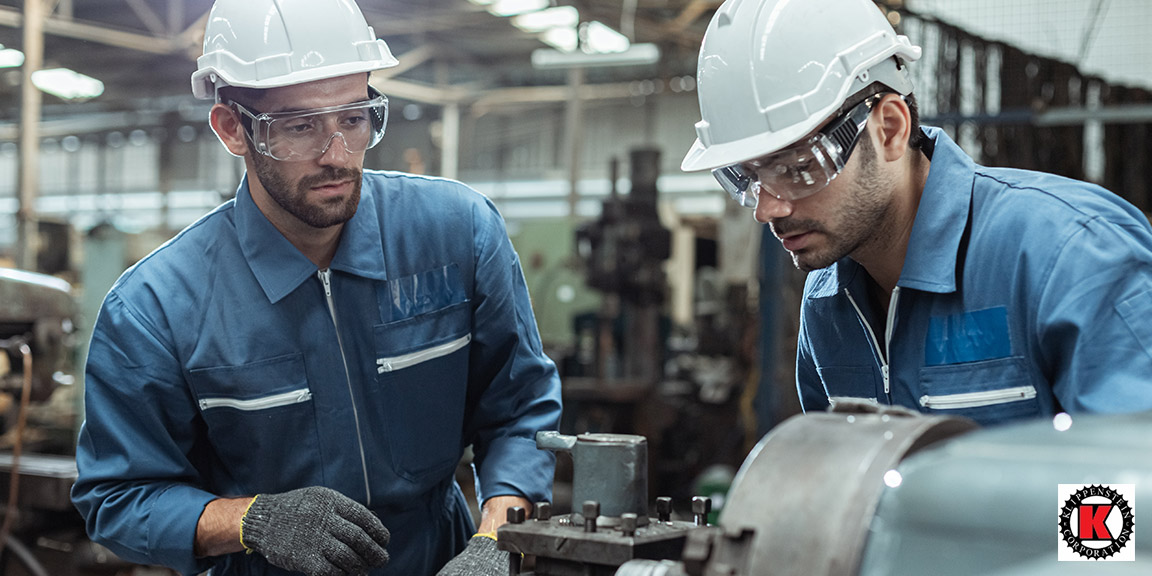As anyone who has owned capital equipment for some time or learns after the first-time service is needed, maintenance really matters. If a company wants to get the full value out of an asset, with the longest amount of life and performance, then maintenance needs to be done on a regular basis. The same logic that applies to a vehicle engine with regular oil changes and consumable replacement applies to capital machinery as well. While there are costs, they are minimal compared to what would otherwise be required when the machinery suffers a significant part failure. Further, many capital equipment packaging machine assets are designed to have parts that will fail over time, only to be replaced with maintenance before that happens. If this is ignored, however, then serious damage can happen to the durable parts.
The whole idea of preventative maintenance on packaging line equipment, for example, is to do the necessary work on a packaging machine so that it keeps running with minimal wear. This is done on a schedule or a routine pattern so that serious damage doesn’t have a chance to begin. Instead, minor damage is absorbed by consumable parts designed for this effect, and they are replaced fast enough that the machine has the longest life possible. Again, a car is a great example that most people are familiar with. Oil changes, hoses, tires, and spark plugs are all replaceable. Doing so keeps the car running right and the engine and transmission working correctly. For most capital equipment owned by a company, preventative maintenance happens on a calendar schedule. This allows different personnel to manage the work, even if they weren’t available for the original work done earlier. Keeping a machine for packaging running smooth then avoids downtime and loss of production.
Clearly, the biggest benefit of preventative maintenance is in avoiding serious cost. If a machine asset is allowed to suffer critical failure, the resulting damage can be extremely costly to repair or worse, the machine may have to be scrapped entirely and replaced in full. The costs associated with either can run in the thousands of dollars, maybe even tens of thousands depending on the repair needed. The second big benefit is safety. When machinery is run through a regular maintenance cycle, it is also checked regularly as well. This catches small problems before they become big ones that can create dangerous conditions for the operators.
Unplanned maintenance is often applied when something does go wrong, and the opportunity makes it possible to do maintenance as well as repair. Most times, a serious repair is needed. While involved, the repair technician can apply maintenance on other parts of the same machine since it’s already partially or completely disassembled. Doing so both takes care of the primary repair needed as well as applies updated maintenance treatment on other systems. This avoids the damage from spreading based on over-wear of other parts having to compensate for the failing part. Otherwise, a machine could see a series of repairs in short order as one thing after another fails.
When should your company apply maintenance to its industrial packaging machines? There’s no perfect default formula. The exact schedule depends on your equipment type, age, budget, and discipline to take care of your capital assets. Some companies squeeze the bottom line hard, only doing maintenance when it’s really needed. On the other hand, others follow it religiously, spending too much money on overkill. The trick is to find a reasonable balance that works at a practical level.
Many companies with multiple assets use software both for packaging machine maintenance as well as monitoring of packaging capital assets, running multiple schedules of care on their equipment instead of just one. This provides a number of benefits. Unlike relying on paper logs that are only as good as the person writing on them, computerized records are archived immediately and can be pulled up again for trend analysis. Second, multiple maintenance views can be applied, applying both time and condition triggers to determine when maintenance should be applied. Third, cost analysis can be seen from beginning to end with computer records, allowing folks on a budget to manage their care costs better, still providing good maintenance but avoiding waste.
Finally, lifecycle planning must be involved in maintenance. At a certain point, maintenance becomes very costly to apply to keep an asset working. It has become obsolete, out of date, and parts have become hard to find. The question comes up: which is better, keep the old horse working or bite the bullet for a packaging machine replacement. Lifecycle planning makes this decision routine. Once the key date is hit, the wheels start moving for a new acquisition. If some life is left in the old equipment, it might be recaptured in a used asset sale.
Klippenstein Corporation can help both with maintenance of capital packaging equipment as well as with monitoring tools. There’s no need to play a guessing game with internal processes. Bring in the experts and extend the life of your equipment to its best potential. Contact us today.
